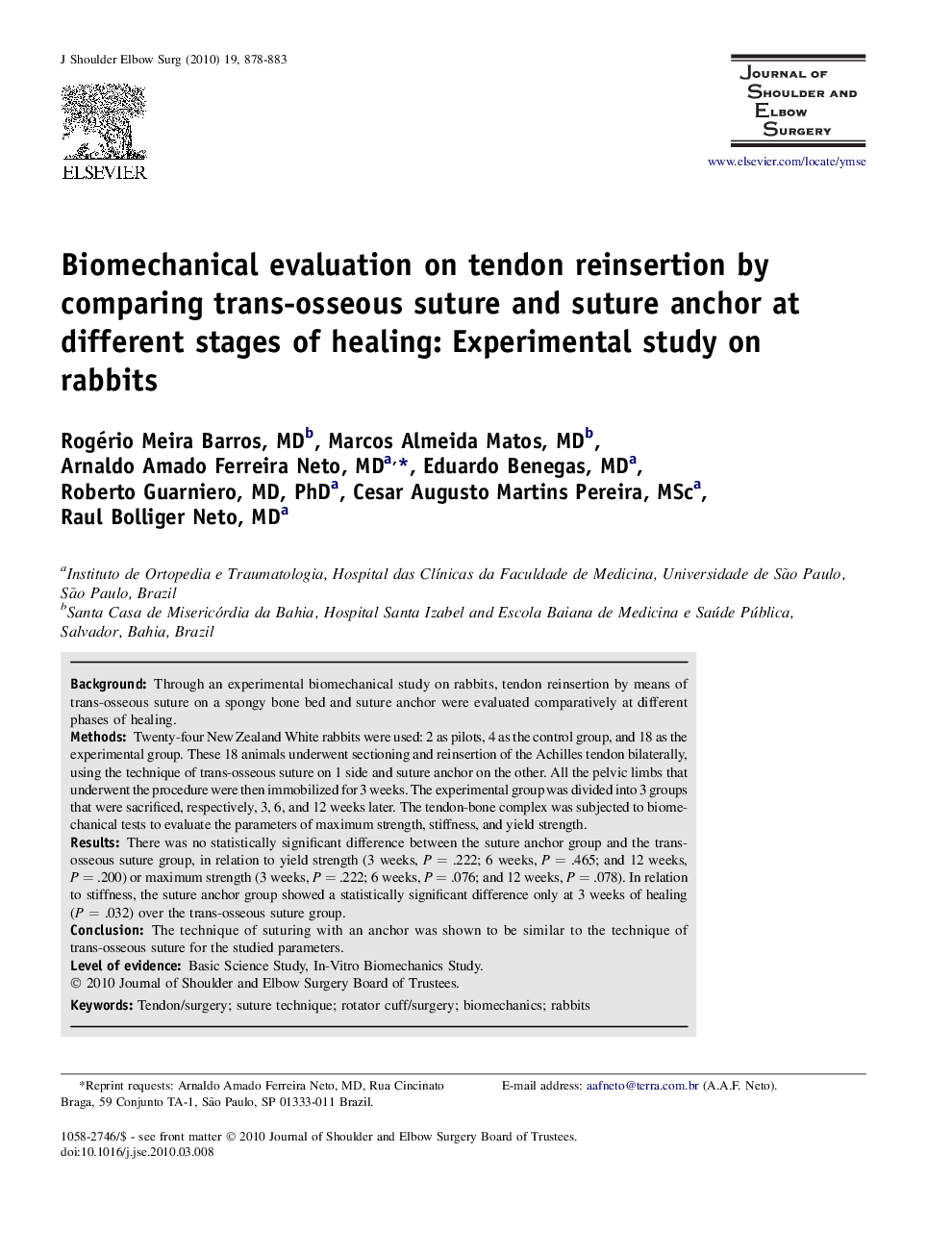| Article ID | Journal | Published Year | Pages | File Type |
|---|---|---|---|---|
| 4075135 | Journal of Shoulder and Elbow Surgery | 2010 | 6 Pages |
BackgroundThrough an experimental biomechanical study on rabbits, tendon reinsertion by means of trans-osseous suture on a spongy bone bed and suture anchor were evaluated comparatively at different phases of healing.MethodsTwenty-four New Zealand White rabbits were used: 2 as pilots, 4 as the control group, and 18 as the experimental group. These 18 animals underwent sectioning and reinsertion of the Achilles tendon bilaterally, using the technique of trans-osseous suture on 1 side and suture anchor on the other. All the pelvic limbs that underwent the procedure were then immobilized for 3 weeks. The experimental group was divided into 3 groups that were sacrificed, respectively, 3, 6, and 12 weeks later. The tendon-bone complex was subjected to biomechanical tests to evaluate the parameters of maximum strength, stiffness, and yield strength.ResultsThere was no statistically significant difference between the suture anchor group and the trans-osseous suture group, in relation to yield strength (3 weeks, P = .222; 6 weeks, P = .465; and 12 weeks, P = .200) or maximum strength (3 weeks, P = .222; 6 weeks, P = .076; and 12 weeks, P = .078). In relation to stiffness, the suture anchor group showed a statistically significant difference only at 3 weeks of healing (P = .032) over the trans-osseous suture group.ConclusionThe technique of suturing with an anchor was shown to be similar to the technique of trans-osseous suture for the studied parameters.
